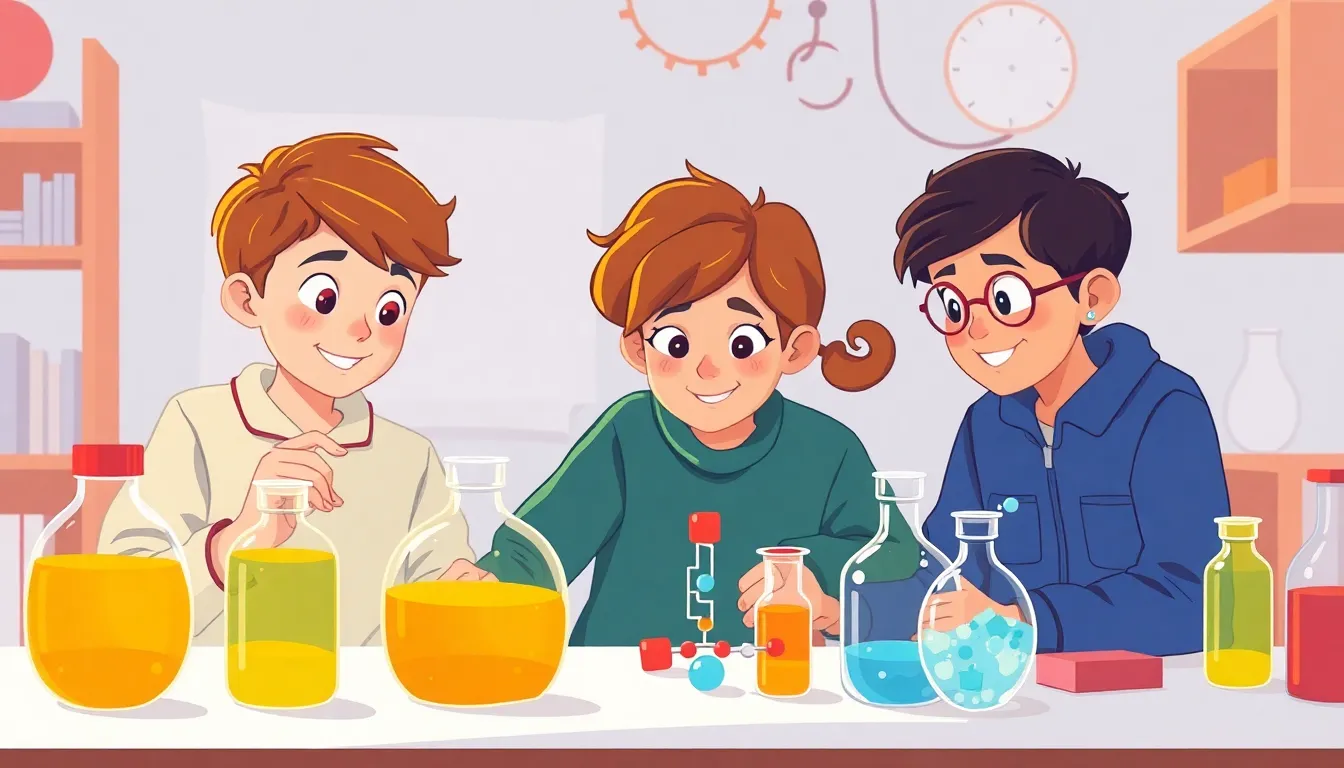
Atoms and Molecules: the Building Blocks
What Is an Atom?
An atom is the tiniest piece of an element that still acts like that element. Every atom has two main parts:
- Nucleus – a tiny core that holds protons (positive charge) and neutrons (no charge).
- Electrons – even smaller particles that whirl around the nucleus in “clouds.”
The number of protons tells us which element it is. For example, carbon atoms have 6 protons, while oxygen atoms have 8.
Molecules: Atoms Teaming Up
When atoms join together, they make a molecule. The way they stick together is called a Bond. There are two common kinds of bonds:
Ionic Bonds
One atom gives an electron to another atom. The first atom becomes positively charged, the second becomes negatively charged, and the opposite charges pull them together. A classic example is sodium (Na) giving an electron to chlorine (Cl) to make table salt (NaCl).
Covalent Bonds
Atoms share electrons so each can fill its outer shell. Water (H₂O) is made when two hydrogen atoms each share electrons with one oxygen atom.
Key Idea
The type of bond decides many properties of a material, such as how hard it is, whether it melts easily, or if it dissolves in water.
States of Matter and Particles
Matter can be a solid, liquid, or gas. The difference lies in how the atoms or molecules move:
- Solids – particles are packed tightly and mostly vibrate in place.
- Liquids – particles stay close but can slide past one another, letting the liquid flow.
- Gases – particles are far apart and move quickly in all directions.
When particles gain energy (for example, from heat), they can break free from each other and change state: solid → liquid (melting) or liquid → gas (boiling).
Why This Matters
Understanding atoms and molecules helps us see the science behind everyday things. Cooking uses chemical reactions, batteries store energy in tiny atomic changes, medicines work by interacting with molecules in our bodies, and even the air we breathe is made of molecules. Knowing the basics gives you a powerful toolkit for exploring the world around you.